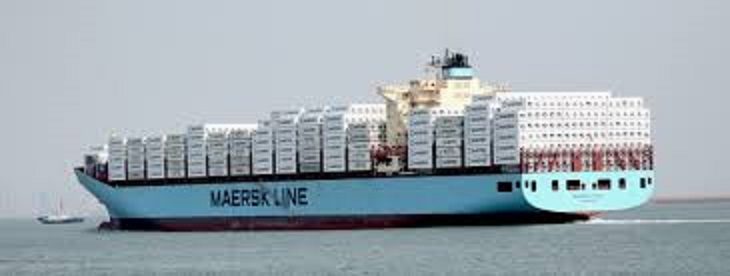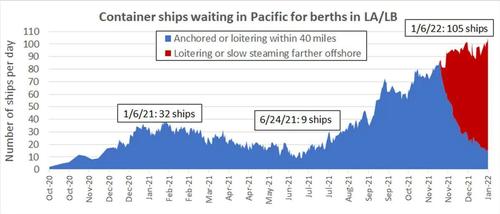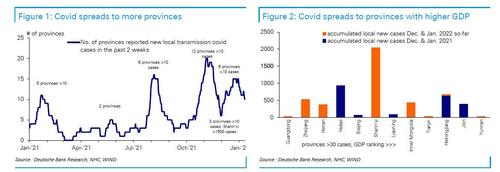Are we heading towards “The Mother of all logistical disasters”?


Bloomberg is now starting to talk about the production problems in China linked to the “Covid Zero” policy which is starting to lock down some large cities and production centers. Until yesterday we were the only ones talking about it. Problems of this kind in some ports in the Center and North, especially Tianjin, have meant that the flows of goods headed towards Shanghai, a port already congested and with long delays, which is therefore congesting even more, causing a "Neck of bottle ”even greater.

Due to this phenomenon, HSBC analysts warn that the world economy could be headed towards the "mother of all" shock of the supply chain, if the Omicron variant that is already affecting the whole world arrives with the same virulence in China, with an effect that would affect all of Asia and the whole world. "Temporary, hopefully, but extremely disruptive all the same" over the next few months, they wrote in a research note this week first spotted by Bloomberg.
China is the factory of the world and we have seen what led to the closing of ports even for a rather short period. That brief stop was enough to send industry and supplies all over the world into a tailspin. So far Omicron has affected the eastern giant in a limited way, if we believe the numbers provided by Beijing on the contagion, but the outbreaks are multiplying day by day. .
Below is a brief timeline of the most recent events courtesy of Deutsche Bank:
The first Omicron outbreak in China was detected in Tianjin city over the weekend. On the morning of January 8, two patients in Tianjin who actively sought medical attention were confirmed as infected with the Omicron variant. The local government immediately blocked some districts, restricted travel and conducted large-scale screening. A total of 41 positive cases were reported on the morning of 11 January.
The source of the local cases in Tianjin is still unknown and transmission in the community is possible, according to local disease control officials. All previous local Omicron cases in Tianjin belonged to the same transmission chain. However, it is not possible to confirm that the above cases are in the same transmission chain as the imported case sequences of the Omicron variant that were found in Tianjin. The first confirmed cases do not even have a travel history outside of Tianjin. The specific source of the local cases found in Tianjin is still unknown at this time.
Even more alarming, the same strain of the Omicron virus has already spread outside of Tianjin. Two positive cases were found in Anyang, Henan on January 8, and it was later confirmed that they were the same Omicron variant found in Tianjin. Through contact tracing and gene sequencing, the source was identified as a college student who returned to Anyang from Tianjin on December 28, 2021 and showed no symptoms. Since then, 81 cases have been confirmed in Anyang in the past few days. This suggests that:
(1) the Omicron virus may have been transmitted to Tientsin for nearly 2 weeks; And
(2) other travelers may have already transported the Omicron virus from Tianjin to other parts of China.
Looking at recent data, the Covid outbreak in China this winter may be worse than the previous winter, as shown in the graph below, more provinces have detected Covid outbreaks this winter. Entering the fourth quarter, there are 12 provinces that have encountered more than 19 local cases in the past 14 days. More significantly, the total number of new cases in the past 14 days in Shann'xi has already surpassed 1500, which is a record, except for Hubei, when Covid first occurred in early 2020. , and this has happened despite China now having very high vaccination rates and strict regulations like lockdowns. Furthermore, comparing the differences between the months leading up to the Chinese New Year in 2021 and 2022, not only has the number of news cases been higher this year, but provinces affected by Covid outbreaks this year also tend to have a GDP. and a higher population density.

As Bloomberg adds, Henan and Guangdong, which also has an outbreak, are electronic manufacturing centers. If cases continue to increase there, it could impact the supply of iPhones and other smartphones.
This also brings us to what Bloomberg calls the paradox of China's aggressive "Covid-zero" strategy: while it helps to contain the spread of the virus, to do so usually requires significant interruptions or blocks as authorities limit the movement of people. Repeated mandatory testing of entire cities disrupts operations and production, albeit nil to the extent seen in places like the United States, where the omicron wave caused sickness to an estimated 5 million people last week, leading to a further economic slowdown.
The risk of disruption to factories is already driving companies to spread the risk by making sure they have alternative manufacturing facilities, Stephanie Krishnan, a supply chain expert at IDC in Singapore, told Bloomberg.
“ We're starting to see companies mitigate risk, seeing where they can increase capacities to produce different products in different factories so they can move it, ” he said.
Echoing what we said last night in "The New Year Brings New All-Time High for Epic Shipping Traffic Jam," Krishnan does not see the end of the global supply crisis soon and warns that it may take several years before growls relax. It's a sobering prospect to start a year that many hoped would mark the beginning of the end of the Big Crunch that haunted producers and consumers for much of last year.
Clearly what happens next is crucial and how China's control of the virus will ultimately be crucial, said Deborah Elms, executive director of the Singapore-based Asian Trade Center. Those companies whose supply chains are completely located within China may be isolated from the country's mitigation strategy. But that doesn't apply to everyone, he said.
"Many products in the supply chains come from outside China," Elms said. "Given the challenges elsewhere, even zero Covid does not solve all outage problems."
The problem with the arrival of the Micron in China gets further worse. The variant is much more contagious, but less aggressive, than the previous ones. In a population already partially infected or recently vaccinated, it could pass with relatively little damage. However, China is in a different situation: the Covid Zero strategy has meant that relatively few sick and healed citizens are relatively few compared to the US and Europe, therefore naturally immune. Furthermore, vaccines appear to be even less effective than those, which are certainly not optimal in the West. At this point, China, with over 20% of the population unvaccinated and almost without immune coverage, has no choice but to continue with the Lockdowns, if it does not want to risk that the health system will jump even in front of Omicron. However, this will keep the crisis going for years.

Thanks to our Telegram channel you can stay updated on the publication of new articles of Economic Scenarios.
The article Are we going to "The Mother of All Logistics Disasters"? comes from ScenariEconomici.it .
This is a machine translation of a post published on Scenari Economici at the URL https://scenarieconomici.it/stiamo-andando-verso-la-madre-di-tutti-i-disastri-logistici/ on Thu, 13 Jan 2022 20:23:46 +0000.
